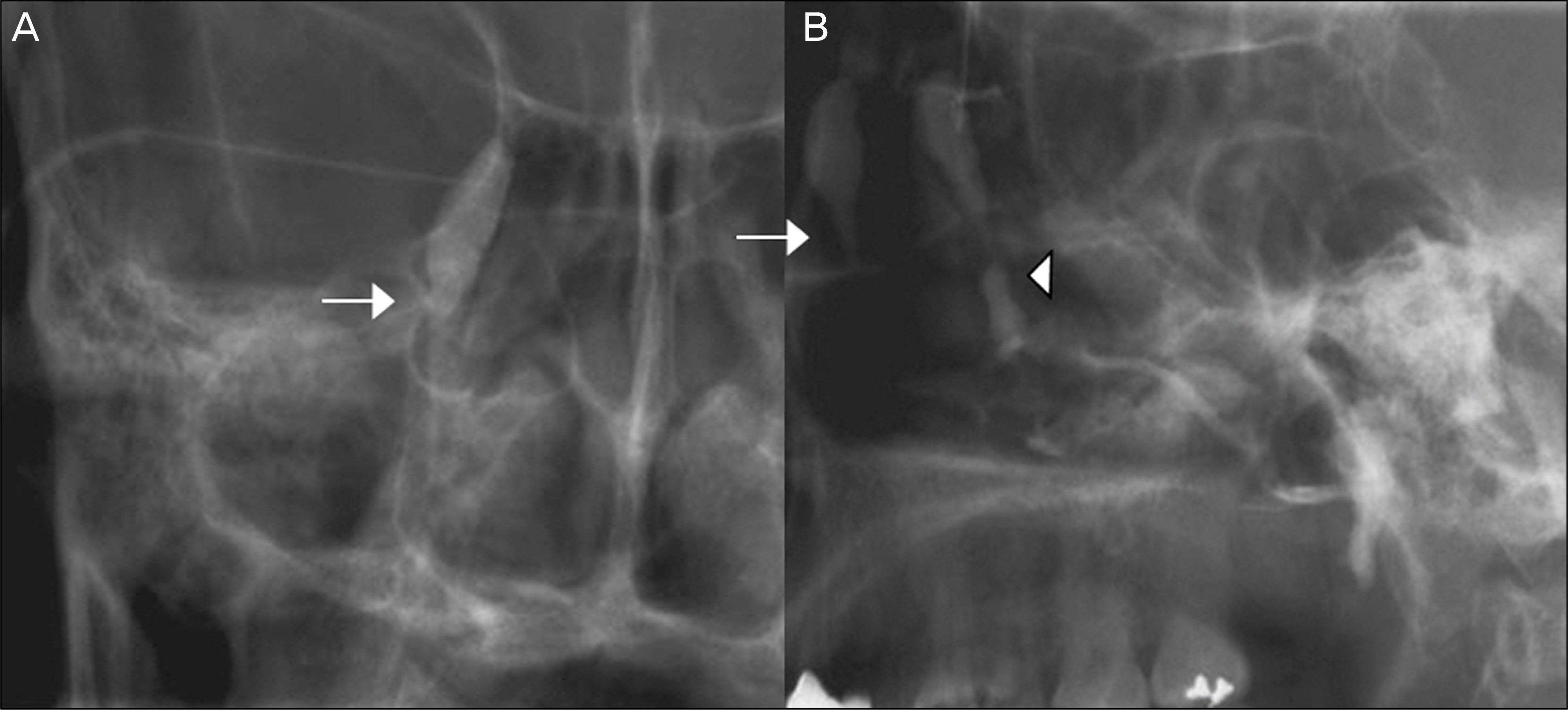J Korean Ophthalmol Soc.
2014 Jan;55(1):1-6.
Nasolacrimal Duct Obstruction after Radioactive Iodine Therapy for Thyroid Cancer
- Affiliations
-
- 1Department of Ophthalmology, Inje University Pusan Paik Hospital, Inje University College of Medicine, Busan, Korea. oculoplasty@gmail.com
- 2Therapeutics Center for Ocular Neovascular Disease, Busan, Korea.
Abstract
- PURPOSE
To investigate the clinical manifestation of nasolacrimal duct obstruction after radioactive iodine therapy for thyroid cancer.
METHODS
The authors examined 622 patients who were treated with radioactive iodine therapy after the operation for thyroid cancer from January 2009 to December 2011. Fourteen patients (18 eyes) were diagnosed nasolacrimal duct obstruction based on the lacrimal irrigation test, lacrimal probing test and dacryocystography in our oculoplastic clinic. We analyzed the dose of radioactive iodine therapy, number of treatments, clinical manifestation and treatment type by retrospectively reviewing the patients' medical records.
RESULTS
The mean radioactive iodine dose (215.7 +/- 23.1 mCi, p = 0.01) and the mean number of treatments (1.36 +/- 0.50, p< 0.001) were significantly greater in 14 patients who had nasolacrimal duct obstruction than in patients who did not. The average onset of tearing symptoms occurred 10.2 months after radioactive iodine therapy. The mean time between correct diagnosis and therapy was 18.4 months. Three patients (3 eyes) had occlusion at the common cannaliculus and 11 patients (15 eyes) had occlusion at the nasolacrimal duct. Ten patients (13 eyes) underwent endonasal dacryocystorhinostomy for complete obstruction and 4 patients (5 eyes) underwent silicone tube intubation for partial obstruction.
CONCLUSIONS
Nasolacrimal duct obstruction is a rare complication associated with radioactive iodine therapy for thyroid cancer, thus, clinicians should be aware of this complication and refer patients with symptoms of epiphora to the oculoplastic department for specialized evaluation and treatment.
MeSH Terms
Figure
Reference
-
References
1. Sawka AM, Brierley JD, Tsang RW. . An updated systematic review and commentary examining the effectiveness of radioactive iodine remnant ablation in well-differentiated thyroid cancer. Endocrinol Metab Clin North Am. 2008; 37:457–80.
Article2. Ahn HY, Park YJ.Incidence and clinical characteristics of thyroid cancer in Korea. Korean J Med. 2009; 77:537–42.3. Alexander C, Bader JB, Schaefer A. . Intermediate and long-term side effects of high-dose radioiodine therapy for thyroid carcinoma. J Nucl Med. 1998; 39:1551–4.4. Kloos RT, Duvuuri V, Jhiang SM. . Nasolacrimal drainage sys-tem obstruction from radioactive iodine therapy for thyroid carcinoma. J Clin Endocrinol Metab. 2002; 87:5817–20.
Article5. Burns JA, Morgenstern KE, Cahill KV. . Nasolacrimal obstruction secondary to I131 therapy. Ophthal Plast Reconstr Surg. 2004; 20:126–9.
Article6. Venkataraman GM, Yatin M, Ain KB.Cloning of the human sodium-iodide symporter promoter and characterization in a differ-entiated human thyroid cell line, KAT-50. Thyroid. 1998; 8:63–9.
Article7. Spitzweg C, Joba W, Eisenmenger W, Heufelder AE.Analysis of human sodium iodide symporter gene expression in extrathyroidal tissues and cloning of its complementary deoxyribonucleic acids from salivary gland, mammary gland, and gastric mucosa. J Clin Endocrinol Metab. 1998; 83:1746–51.
Article8. Morgenstern KE, Vadysirisack DD, Zhang Z. . Expression of sodium iodide symporter in the lacrimal drainage system: im-plication for the mechanism underlying nasolacrimal duct obstruction in I(131)-treated patients. Ophthal Plast Reconstr Surg. 2005; 21:337–44.
Article9. Shepler TR, Sherman SI, Faustina MM. . Nasolacrimal duct obstruction associated with radioactive iodine therapy for thyroid carcinoma. Ophthal Plast Reconstr Surg. 2003; 19:479–81.
Article10. Bakheet SM, Hammami MM, Hemidan A. . Radioiodine se-cretion in tears. J Nucl Med. 1998; 39:1452–7.11. Brockmann H, Wilhelm K, Joe A. . Nasolacrimal drainage obstruction after radioiodine therapy: case report and a review of the literature. Clin Nucl Med. 2005; 30:543–5.
Article12. Kilfoy BA, Zheng T, Holford TR. . International patterns and trends in thyroid cancer incidence, 1973-2002. Cancer Causes Control. 2009; 20:525–31.
Article13. The Korea Central Cancer Registry, National Cancer Center. Annual report of cancer statistics in Korea in 2009, Ministry of Health and Welfare. 2011.14. Solans R, Bosch JA, Galofré P. . Salivary and lacrimal gland dysfunction (sicca syndrome) after radioiodine therapy. J Nucl Med. 2001; 42:738–43.
- Full Text Links
- Actions
-
Cited
- CITED
-
- Close
- Share
- Similar articles
-
- Patient Preparation and Special Consideration before Radioactive Iodine Therapy
- Outcomes of Endoscopic Dacryocystorhinostomy in Patients Receiving Radioactive Iodine Therapy for Thyroid Carcinoma
- Diagnostic and Therapeutic Approaches to Radioactive Iodine Refractory Differentiated Thyroid Cancer
- Surgical Outcomes of Dacryocystorhinostomy in Lacrimal Drainage Obstruction after Systemic Chemotherapy or Radioactive Iodine Therapy
- A Case of Nasolacrimal Duct Obstruction after Two-Jaw Surgery



